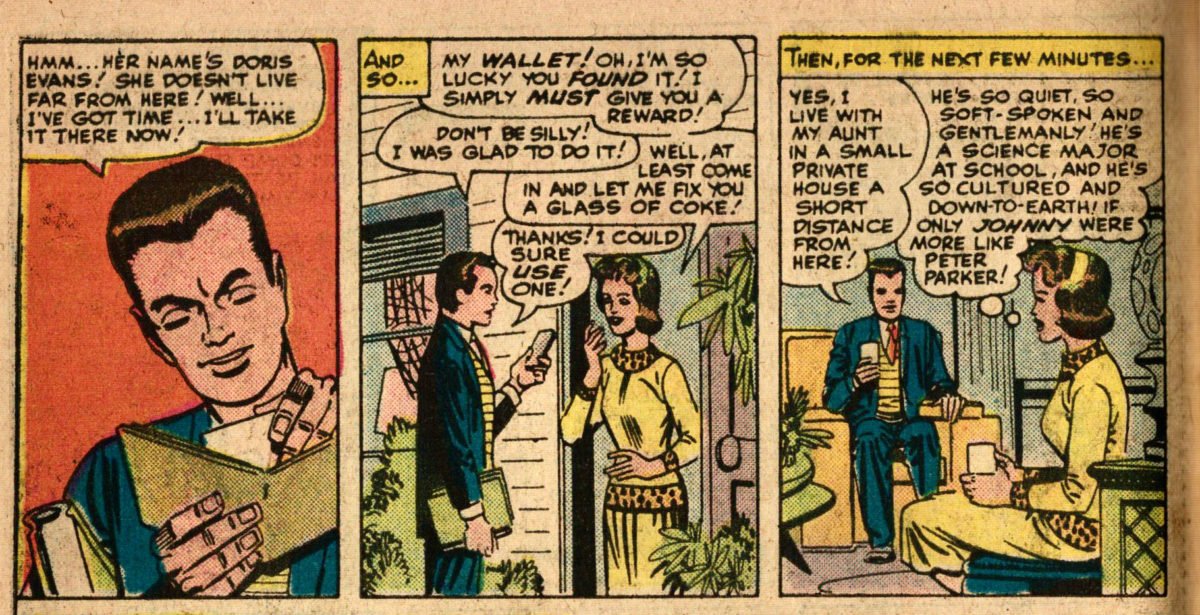Featuring: Ant-Man and Wasp
Release: April 2, 1963
Cover: June 1963
12 cents
Plot: Stan Lee
Script: H.E. Huntley
Art: Don Heck
13 pages

I read this story in Marvel Masterworks: Ant-Man/Giant-Man vol. 1.
With the return of Egghead, Ant-Man gets his first recurring villain. We’ve only seen so many recurring villains, with many new (but often forgettable) ones cropping up. Fantastic Four recurring villains so far are: Namor, Dr. Doom and Puppet Master. Thor of course keeps fighting Loki. Human Torch has now fought Paste-Pot Pete twice and Wizard thrice. And I think that’s it. So far, no recurring foes for Spider-Man, Iron Man, or Hulk (unless you count the US military).
They dedicate 2 pages the recapping the last battle with Egghead. At this point, the writers have mostly seemed to pay little attention to details, continuity, or consistency. Yet here they stick pretty close to the actual story in the recap, including some dialogue. Mostly new art and script, but a very close retelling.

Remember that in the 1960s, comics weren’t yet published online. You had to find them at a local vendor, so it was possible to miss an issue. This recap would help keep readers of that era up to speed if this happened.
We now have a new status quo. Ant-Man and Wasp are teammates. She thinks they should date. He is stuffy. They are both eager to battle evil and such. Wasp is sometimes overeager to prove herself. Even though she’s the one who can fly. While he… catapults.
Continue reading “Tales to Astonish #45”



















































